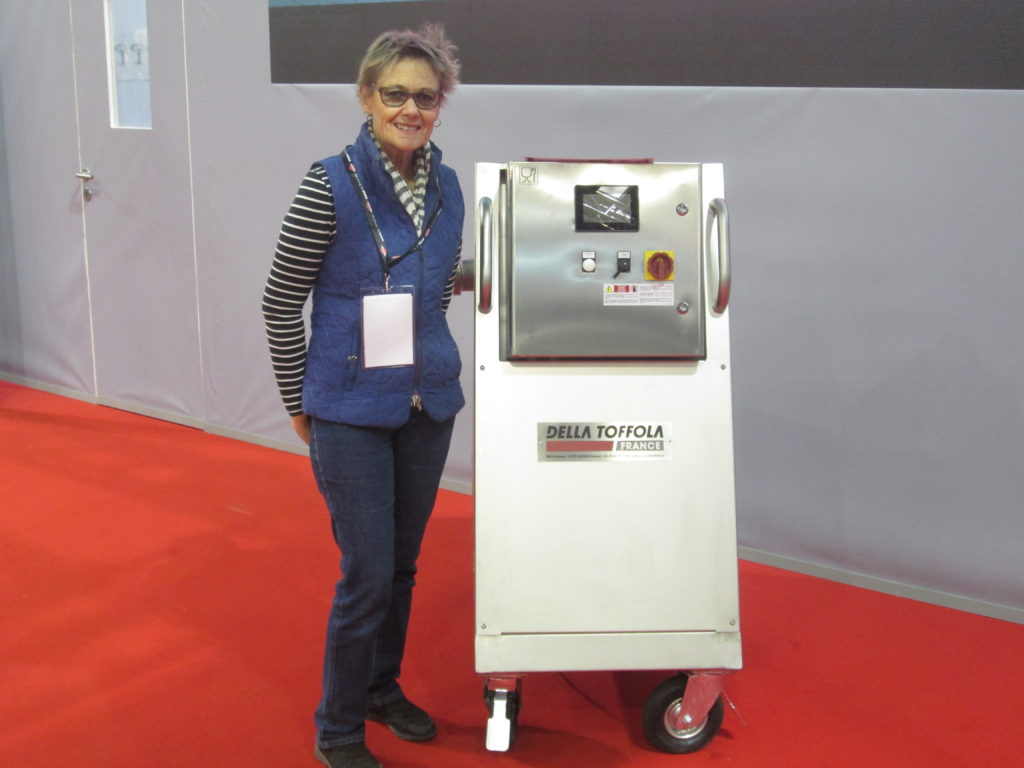
By: Alyssa Andres
I can’t count the number of times I’ve heard people say, “I don’t like Ontario wine.” It’s a statement I constantly hear, especially in the Niagara region, where a lot of wine lists focus on local producers. Every time I hear this sentiment, I’m a little appalled. It’s like saying you don’t like Chardonnay. Maybe you just haven’t found the right Chardonnay for you. So, this year, when I attended my very posh friend’s annual holiday wine tasting party, I brought along a nice, moderately priced bottle of Ontario wine to add to the mix of thirty bottles we were blind tasting. The premise: each person brings a bottle of wine and, throughout the night, tries each one and chooses their favorite. The winner was chosen based on everyone’s overall rating. Simple. The prize: a $200 bottle of Gamble Mary Ann, a Napa Valley Bordeaux Blend. I quietly uncorked my bottle of wine from Ontario’s Ridgepoint Wines and waited for the night to unfold.
Currently, Ontario is cursed with the same stigma that California received in the 1970s before the Judgement of Paris. No one seems to believe Ontario vintners are capable of producing great wine. Forty years later, California is one of the leading producers in the world and seen as a premier destination. However, Ontario winemakers are still fighting to make a name for themselves in the international market, despite having been producing wine for decades. Several factors influence this: the lack of knowledge when it comes to the Ontario wine region, the stereotypes associated with Ontario wine, and the need for better distribution of wine from within the province.
Winemaking in Ontario dates back to 1811 when German native, Johann Schiller planted Pennsylvania-native Labrusca grapevines in Cooksville, Ontario. The first winery in the province opened its doors in 1866 on Pelee Island and Niagara’s first winery, the Ontario Grape Growing and Manufacturing Company, followed shortly after in 1873. These early days of winemaking in Ontario saw over thirty new wineries open for business by the late 1800s. Unfortunately, by the time prohibition was repealed in 1927, this number had fallen from 61 to six. At this same time, the government created the Liquor Control Board of Ontario to control the sale, transportation and delivery of alcoholic beverages in the province. Eighty-six LCBO stores opened by the end of that year, and liquor permits were issued at $2 each to enable individuals to purchase alcohol. At this point, the rules and regulations surrounding the production and sale of wine did not allow for new wineries to open.
It wasn’t until the early 1970s that winegrowers started to take the first steps to revitalize the Ontario wine industry. In 1974, Inniskillin Winery became the first new Ontario winery to open its doors since 1916. They opened the gates for a slew of other wineries to follow, and, by 2005, a total of 75 new wineries had opened up in the region. In 1988, the Vintner’s Quality Assurance laid out the specific geographic guidelines for the winemaking appellations of Ontario and set strict production standards on wine throughout the province.
Today, there are three VQA wine appellations in Ontario: Lake Erie North Shore, Niagara Peninsula and Prince Edward County. Within the Niagara peninsula, there are two regional appellations: Niagara-on-the-Lake and the Niagara Escarpment. These regional appellations are then broken down further into 10 sub-appellations based on their unique geographical conditions. Each sub-appellation has different geology, soil, elevation and variation in temperatures and precipitation. There is such diverse terroir in this 13,600 acres of land that they can produce everything from delicate Rieslings to bold and tannic Petit Verdot. The Niagara Peninsula currently boasts over 46 different grape varietals. Riesling, Chardonnay, Cabernet Franc, Gamay Noir and Pinot Noir particularly flourish here.
When people think of Canada, they don’t naturally think of wine. They think, “The Great White North,” hockey and snow. The reality is, the Ontario landscape is so vast and varied that it allows for the production of a lot more than just icewine. The Great Lakes border the southern part of the province. Most vineyards are planted along the perimeter of Lake Ontario, an enormous body of water that moderates the typically colder winter temperatures of the area. Moderate temps also make for a longer growing season. Harvest of most grapes doesn’t start until late September, with the late-ripening grapes being picked still well into November. Everything from Malbec to Nebbiolo can be grown. Ontario may have cold winters, but the summertime temperatures reach Mediterranean levels of 95 degrees Fahrenheit.
Ontario also has elevation. The Niagara Escarpment stands 177 meters tall and runs through the entire Niagara Escarpment appellation. The enormous cliff formation faces north and, combined with the moderating effect of Lake Ontario, creates the perfect micro-climate for nurturing a diverse variety of grapes. The escarpment shelters the vineyards from prevailing southwest winds and traps warm lake air from the north, allowing for later bud bursts and less risk of frost in the spring, as well as extended growing seasons in the fall. Hot days followed by cold nights allow grapes to retain their acidity while fully ripening, making for exceptionally well balanced, food-friendly wine. The streams that run through the escarpment provide drainage during the spring melt and provide an excellent source of groundwater during the dry summer months.
The soil in the Niagara Escarpment is rich and complex. UNESCO recognizes the region as a World Biosphere Reserve due to the regional appellation’s fossil-rich sedimentary soils, not unlike Burgundy and Loire Valley. The Beamsville Bench sub-appellation has some of the most sought after vineyard land because it’s home to fossil-enriched dolomites. High in calcium-magnesium, the dolomites give the wines of Beamsville Bench a distinct minerality, similar to a Chablis. Beautiful Sauvignon Blanc and Pinot Gris are being produced here with notes of slate and wet stone, complemented by fresh pear and crisp green apples.
Just a few kilometers from the Beamsville Bench, you find yourself in the Twenty Mile Bench with a terroir comprised predominantly of limestone and shale. These soils provide excellent water holding capacities during the growing season. Combined with the numerous streams that dissect the escarpment and provide drainage in the spring, Twenty Mile Bench is a highly regarded VQA sub-appellation. Here you will see producers focusing primarily on Burgundian style Pinot Noir and Chardonnay. These beautiful cool climate wines are a breath of fresh air after an onslaught of overripe and overproduced New World wines the market has been seeing over the recent years.
Directly next to Twenty Mile Bench, nestled between the escarpment and Lake Ontario, the Lincoln Lakeshore appellation has one of the longest and warmest growing seasons in the region. The scarp acts as a shield from heavy winds, and the lake provides insulation against cold temperatures and traps moisture during hot, dry summers. The most notable characteristic of Lincoln Lakeshore, though, is its terroir. The soil within this appellation is extremely varied. Fifty-five percent of the area is covered in light sand, but you will also find pockets of deep red clay loam and alluvial deposits from the ancient lake that once existed here. Cabernet Franc seems to flourish in these areas in a very classic expression of the varietal. Big tannin, bold black fruit and a hint of crisp green pepper are typical in these wines.
Meanwhile, along the sunny banks of the Niagara Lakeshore appellation, light, sandy soils allow for deep-rooted vines and later ripening grapes. Here, you will find notably fuller-bodied wines with potential for maturing: big Bordeaux style blends with bold black fruits and ripe tannin. They are even growing Petit Verdot and Tannat in this appellation. The simple geography and proximity to the lake and Four Mile Creek ensure warm temperatures and lots of sunlight year-round. In other words, when it comes to wine in Ontario, there’s the opportunity to produce just about anything.
The issue is you won’t necessarily find the best Ontario wines in the local liquor store. Ontario vintners can’t even get most of them on the shelves in their own LCBO stores. The process of getting wine in the hands of consumers is not an easy one in Ontario.
Most Ontario wineries are opting for small-batch wines that are only available in the winery tasting rooms. Recently, “virtual wineries” have started popping up with no physical storefront, just a product packaged under a winery name—similar to the Old World French tradition of “negociants.”
The best way to find the best Ontario wine? Come to Ontario. Let the locals tell you where to go. It won’t necessarily be the big names like Wayne Gretzky or Jackson-Triggs. Some of the best wineries are literally inside the winemaker’s house, and they’re all too happy to have you.
Since moving to the region, I have had the pleasure of discovering numerous wine producers who are doing remarkable things. Ridgepoint Wines, located in the Twenty Mile Bench, is one of the wineries that impressed me. At Ridgepoint, they are producing everything from appassimento-style Cabernet Sauvignon and Merlot to single varietal Sangiovese and Nebbiolo. The wine that I brought to the holiday tasting party was a 2012 blend of Cabernet Sauvignon, Merlot and Ripasso-style Aglianico. Amongst the juicy California Cabs and concentrated Amarones on the table, it was a delightful respite.
Tasting thirty wines in one night is no easy feat. Your palate can only handle so many Barolos in one evening. What my wine offered was a beautiful variation from the others, starting with a complex nose of cherry and cassis, toast and cedar. The refreshingly bright acidity stood out amongst the other wines, and the body, tannin and alcohol still held up against all of the heavy hitters. The palate showed lots of plush fruit balanced with oak and developing notes of leather and tobacco that lingered on the palate in a long, complex finish. The crowd didn’t know what hit them.
At the end of the night, I put on my jacket and packed up my newly acquired bottle of Gamble Mary Ann with a smug grin on my face. I proved to myself, and the others at the party, that Ontario has something to offer the world of wine. Ontario wine is not just good—it’s great.









